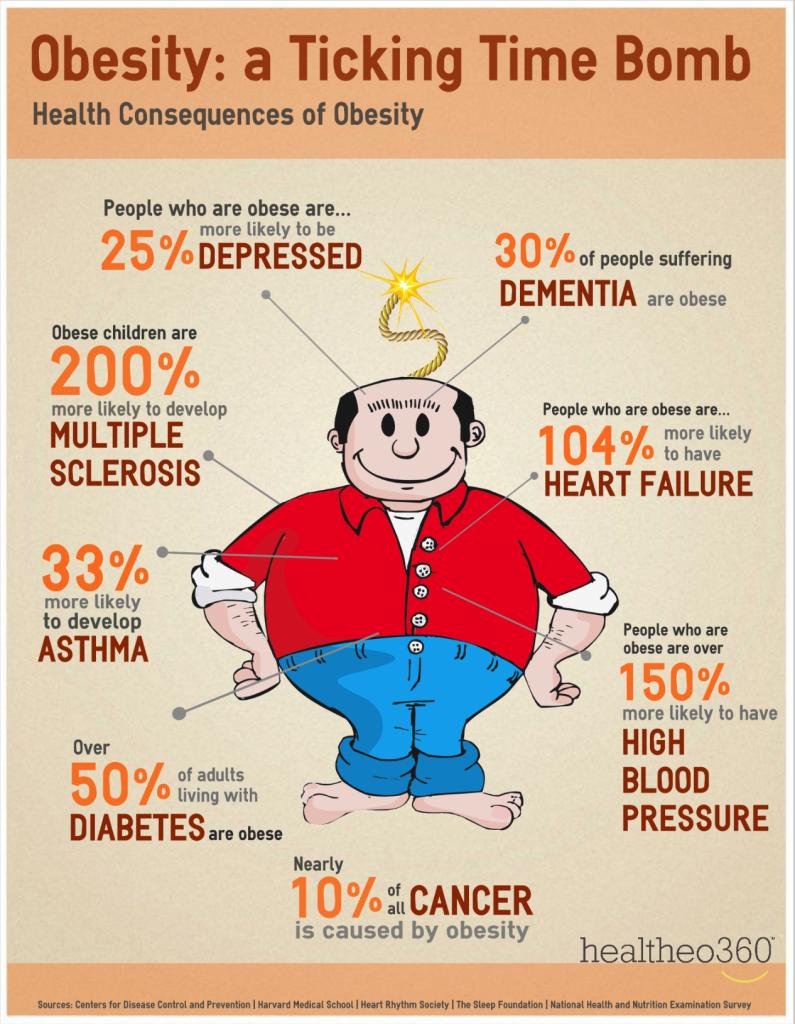Appetite and malnutrition
 Students are first introduced to the control of appetite, including the role of the hypothalamus in the brain. Then through a simple 'web quest' style quiz students read about several interesting cases, including PKU, obesity and anorexia and answer some self marking multiple choice questions to test their understanding. This is followed by a short revision note making activity.
Students are first introduced to the control of appetite, including the role of the hypothalamus in the brain. Then through a simple 'web quest' style quiz students read about several interesting cases, including PKU, obesity and anorexia and answer some self marking multiple choice questions to test their understanding. This is followed by a short revision note making activity.
Lesson Description
Guiding Questions
What are the effects of malnutrition?
How can malnutrition involve eating too much, too little, or both?
Activity 1 - Appetite and the hypothalamus
Watch the short video ![]() Why do we feel hungry? Intro to the brain's influence on hunger.
Why do we feel hungry? Intro to the brain's influence on hunger.
If you are keen to find out more try this ![]() A more detailed introduction to the science of nutrition
A more detailed introduction to the science of nutrition
Questions
What is energy homeostasis?
..................................................................................................................................................................
Which part of the brain receives signals from fat cells and the intestines to signal that you are hungry?
..................................................................................................................................................................
What is the role of leptin on appetite? (Remember HL topic 11?)
..................................................................................................................................................................
Model answers
What is energy homeostasis?
........ Keeping a balance between energy used by the body's cells in metabolism and energy consumed in food...
Which part of the brain receives signals from fat cells and the intestines to signal that you are hungry?
......... The hypothalamus ..........
What is the role of leptin on appetite? (Remember HL topic 11?)
......... Leptin is a hormone made by fat cells (adipose cells)
..........It affects the hypothalamus and limits appetite, thus helping to regulate energy balance
............ (When fat cells are full of lipids (long term energy storage) the appetite is lowered by the production of leptin)
Activity 2 - Malnutrition and unusual cases.
Read the information and answer the questions in the following quiz ( web quest )
Case 1 - PKU
While for most of us eating a diet containing all the essential micronutrient is essential, some people need to eat a diet which is missing an essential amino acid - "Phe" or phenylalanine. (pronounced FEE - NYE - ALA - NYNE).
This is an inherited condition where person has two faulty alleles of the gene for the enzyme which hydrolyses this amino acid.
Watch the following video about PKU.
Select the correct statements from the list below by ticking the box.
Phenylketonuria (PKU) is an inherited disorder that increases phenylalanine levels in the blood. Phenylalanine (Phe) is an essential amino acid obtained through the diet. It is found in all proteins. Normally the body metabolises this amino acid in the liver using the enzyme phenylalanine hydroxylase. People with PKU don't have enough of this enzyme and if PKU is not treated, phenylalanine can build up to harmful levels in the body, causing intellectual disability and other serious health problems.
It is usually treated by controlling the diet, reducing intake of protein and taking dietary suppliments.
Case 2 - Vitamin C - is it really an essential vitamin?
Read the two short articles below and answer the question which follows.
Ascorbic Acid (Vitamin C) for Dogs and Cats Dr. Nicholas Dodman Last Modified: July 09, 2015
Ascorbic acid, also called Vitamin C, is a naturally occurring substance that is important in the formation of collagen in dogs and cats. Ascorbic acid is manufactured by most animals, except for some birds, fish, guinea pigs, fruit bats, primates and humans.
In dogs and cats, ascorbic acid is manufactured in the liver and normally does not need to be supplemented. Claims that nutritional deficiency of ascorbic acid causes scurvy in dogs and cats are probably inaccurate. The only situation in which ascorbic acid deficiency might occur in dogs and cats is in the case of liver disease, which might disrupt its production.
Ascorbic acid is available over-the-counter but should not be given to cats and dogs except under the supervision of a vet.
Vitamin C and Guinea pigs - by Pete and Guinea pig Corner
Like chickens, humans and other mammals, guinea pigs need vitamin C to keep their bodies functioning properly. Also like humans, but unlike other rodents and other animals, guinea pigs are unable to produce their own supplies of vitamin C. This means that they must get 100% of their requirements from the food and supplements you feed them.
Problems Caused by Vitamin C Deficiency
When guinea pigs don't have enough vitamin C in their diets, it can lead to a number of diseases and ailments:
Which of the following animals need to get vitamin C in their diet?
Ascorbic acid (vitamin C) is produced in the livers of some mammals but not in all mammals. Humans, primates and guinea pigs have to get their vitamin C in their diet.
Case 3 - Vitamin D deficiency
Most people get enough vitamin D from exposure or their skin to sunlight (without using sunscreen) for 15 minutes per day.
Watch this short introduction to the role of vitamin D in bone formation.
Answer the questions below.
Which minerals require vitamin D to be absorbed properly?
Bone mineralisation requires the presence of calcium. Without vitamin D the digestive system cannot absorb calcium effectively.
Rickets in children is caused by a lack of vitamin D (a milder form called Osteomalacia occurs in adults)
Case 4 - When does body tissue get broken down?
Find out what happens to body tissues during starvation & anorexia using these websites.
Answer the question below.
When the body is not getting enough calories for a prolonged period which of the following things happen?
Starvation can be caused by fasting, coma, famine, and anorexia nevrosa. The body resists starvation by body’s tissue break down and uses them as a calories source (like the furniture burning to keep the warm house). As a result, muscles and internal organs become severely damaged, and the adipose tissue under the skin (body fat) disappears.
Case 5 - Being overweight increases risk of hypertension and type II diabetes.
Look at the infographic below ...

Which of the following statements are supported by the data in the infographic?
This infographics has some strange % figures which are quite misleading. The figures given are not always the same,
eg. "33% more likely" is not the same as "50% of adults".
However it has been show in a wide range of studies that being overweight increases the risk of type II diabetes, and also of hypertension (high blood pressure)
Case 6 - Blood cholesterol and coronary heart disease.
Sometimes there are conflicting claims for causes and effects of lifestyle choices and disease. Study the following two posters.
These to posters claim different things but one thing is true in both cases. Choose the best answer in the question below.
Cholesterol levels in the blood can:
Cholesterol in blood can be used as an indicator of coronary heart disease risk.
Some people think cholesterol causes heart disease. Others think it is simply another symptom of an underlying heart disease cause.
In both cases Cholesterol is a useful diagnostic tool.
Activity 3 - Revision notes
Complete notes about this activity on ![]() this Malnutrition case study notes worksheet.
this Malnutrition case study notes worksheet.
Teacher's notes
In activity 1 the videos do not cover the IB syllabus perfectly, but their content is clearly related to the role of the hypothalamus in the control of appetite. In the second video the presenter covers many of the underlying reasons for overeating which are given as examples mentioned in the guide, but the coverage is a bit too detailed for IB students.
Activity 2 is presented as a quiz, but really it is guided reading using a few multi choice questions to check that students have understood the necessary parts of each short website page or video clip.
Activity 3 gives the students chance to make a few notes about the key points from the guide. Students will have seen the required details during the web quest, but this may be better as an activity in groups, or even as a whole class note taking activity. The teacher could model good revision note making, or students could each contribute part of the task.

 IB Docs (2) Team
IB Docs (2) Team
